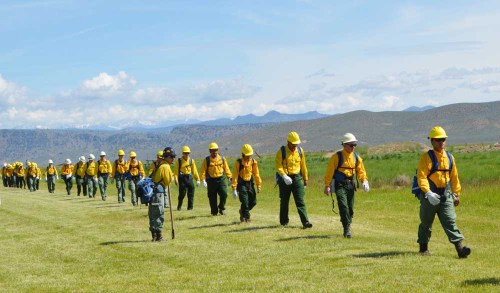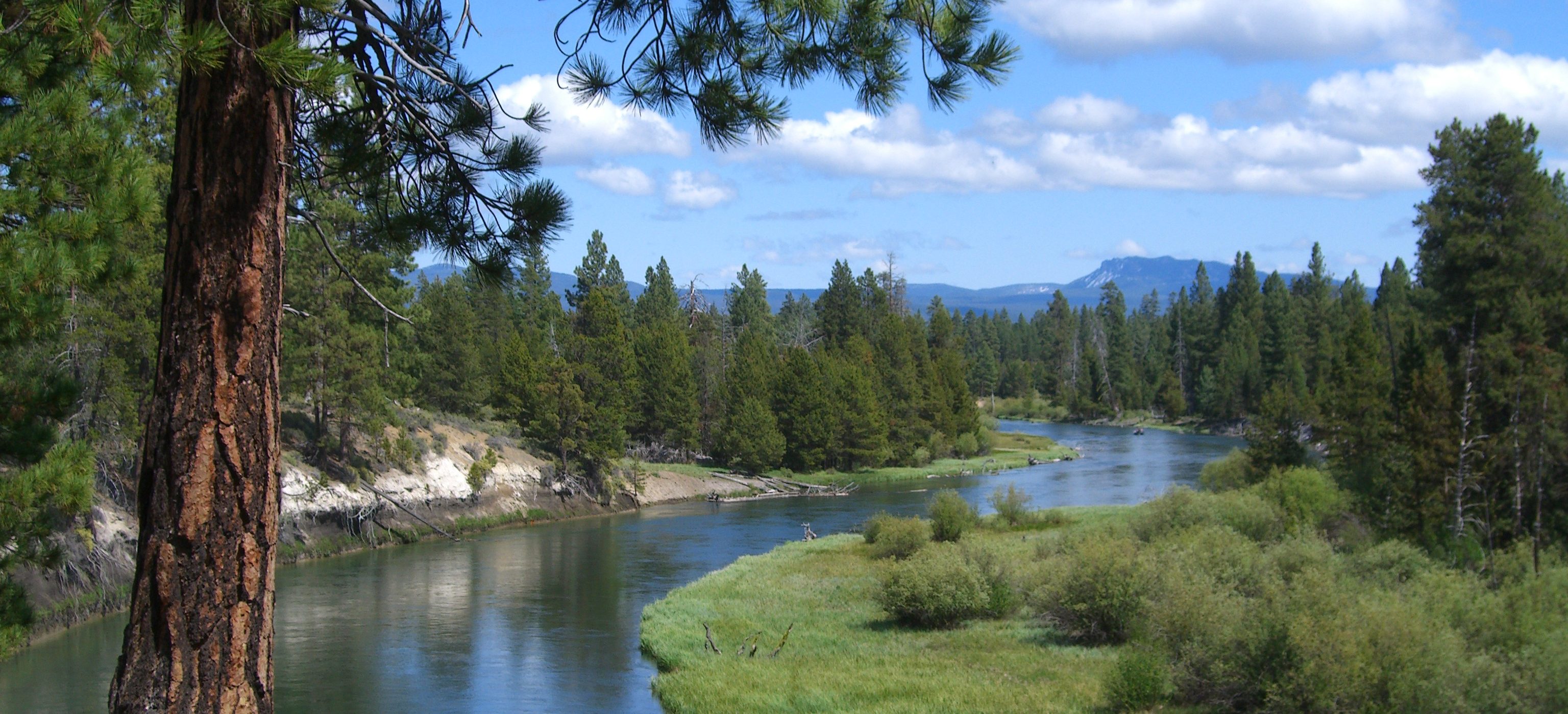BLM’s budding firefighters train at Burnt River School
Published 6:00 am Tuesday, June 14, 2022

- Firefighter trainees march to lunch June 9, 2022, during training at Burnt River School in Unity.
UNITY — Driving the 46 miles from Baker City to Unity over Dooley Mountain is a winding route that for miles passes through the remnants of a scorched forest that offers little shade.
This is the aftermath of two major lightning-sparked wildfires — the 1989 Dooley Mountain fire, which burned 20,000 acres, and the 104,000-acre Cornet-Windy Ridge blaze, which swept through in August 2015.
Trending
This year the fire season hasn’t started thanks to the consistently wet spring.
But elsewhere, fire season pretty much never ends.
And that’s one reason Tom Cuellar was in Unity last week, training a crew of about 40 firefighters near the Burnt River School.
Cuellar is the crew coordinator for the Bureau of Land Management’s Vale District, which includes public land the agency manages in Baker County.
“We’ve had crews come back from California on Christmas day, Thanksgiving,” Cuellar said on Thursday, June 9.
He was helping prepare a new batch of Type 2 firefighters, running intensive training in the open fields adjacent to the school at the north end of Unity, population about 70.
Trending
Cuellar has been involved in firefighting for 27 years.
“Today we’re using hand tools and hand line, pumps and hose,” Cuellar said. “They’ll set up a Mark 3 pump and get instructions on what type of hose to string out.”
BLM firefighters, along with volunteers from many rural protection districts and associations, cover some of the vast rangelands between the Snake River and extending as far south as Reno, Nevada.
Trainees, clad in fire-resistant Nomex clothing — green pants, bright yellow shirts — hard hats, sunglasses and gloves, learn to use an array of hand tools to dig fire lines designed to prevent flames from spreading.
They also learn to carry out “gridding,” where crew members are separated to slightly wider than arm’s length apart and systematically cover ground in order to ensure no single ember remains.
Fire is normally obvious, but heat can also hide, Cuellar said.
He mentioned fires in Western Oregon in 2017 that, even after they were extinguished above ground, still produced smoke from heat in underground root systems half a decade later.
Besides training firefighters, the camp at Burnt River School trained younger workers, as young as 16, to serve as support crews at fire camps. They can do all sorts of tasks, from serving food, to setting up and tearing down camps, often in barren, rocky areas.
Pay for Type 2 firefighters can range up to $19.80 an hour. They’re often sent to high-risk locations for shifts up to 14 days long. They dispatch not just as individuals, but as an entire unit, vehicles and equipment included — everything but the water.
Cuellar said his crews have been sent as far as Alaska, and have made visits to the Carolinas, Florida, Kentucky and Georgia over the years. Fire crews were on call and responded to situations as unique as the Challenger space shuttle disaster and Hurricane Katrina.
If the situation merits, they can sometimes spend as much as two weeks on call without seeing fire, but standing by in locations such as California and New Mexico, where any open flame can expand into disaster.
If you’re able bodied and interested in a career in firefighting, visit www.blm.gov/programs/public-safety-and-fire/fire/careers or call the Oregon BLM at 503-808-6001.









